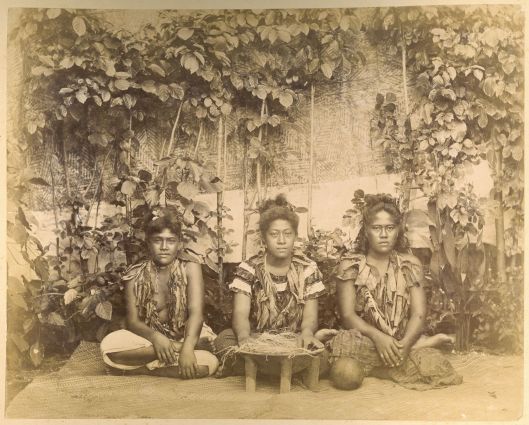It was a meeting of minds that spanned two decades and spawned a plethora of innovative design ideas.

Interior Design Lasalle
From that collaboration emerged the concept of a street that would provide the necessary conduit for communication among the firm’s 15 divisions. “A street happened to work best for this particular space. If the building’s floor plate were a square, we may well have come up with something else,” said Hammer, who served on the project’s design team.
Interior Design Layout
In its final rendering, a central east-west avenue — “18 1/2 Street” — spans the entire length of both floors. Lining one side of a given street are all major resource groups, including graphics, specifications and visual aid departments, as well as a library, conference rooms and a reception area. Flanking an avenue’s opposing side are clusters of open-plan workstations with managerial offices interspersed among them. The clusters are organized according to department or, in some cases, to a specific project with which the firm is involved.
In total, the clustered areas embrace a studio concept, striking a balance between privacy, flexibility and, above all, open lines of communication. While managerial offices are enclosed by virtue of dropped acoustical ceilings and 7-ft.-high walls, adjacent clusters are defined by 60-in. movable partitions.
“The enclosed offices address a number of considerations,” said project designer Zupancich. “They break up the space and give it a sense of scale. Without them, it would have been like looking down a football field. We also wanted to have the managers near their departments. And since we wanted to maintain the openness of the space by using the original full-height ceilings wherever possible, the dropped ceilings provided us with an area to hide ductwork, telephone lines and other wiring.”
On sides closest to the studios, street corridors are enclosed with partitions 5 1/2 feet high. Tall enough to afford a comfortable level of privacy in adjacent areas, the walls are also unobtrusive enough to draw workers onto the street. “People are encouraged to come out and talk with one another while working. Because all resource services are accessed along the street, people invariably run into one another,” Hammer said.
Critiques on the streets
To further encourage use of the streets, their walls are covered with homosote, a thick paper-based material that allows departments to tack up boards and conduct critiques of their work there. “Acoustically, the interaction on the street doesn’t pose a problem in adjacent areas,” Zupancich said. “Due to the height of the ceiling, sound rises and disperses, rather than reflecting directly back. And since we were using the original full-height ceilings instead of acoustical tiles, we carpeted the floors to provide one soft, nonreflective surface. But to be honest, acoustics weren’t a major consideration along the street area. Sound is important to us.”
However, the noise levels generated by some resource groups — coupled with the need for quiet in conference rooms and libraries — dictated a more enclosed plan for support areas located off the street. “The partitions lining that side of the street are 7 feet tall and tend to be more enclosed than the studio areas. But each of those support areas still opens directly onto the street,” Zupancich said.
Modest budget
Adapting the two floors to HLW’s needs was accomplished at a surprisingly modest budget of $50/square foot, no small feat considering that the two floors were marked by 50 years of disrepair. “The two floors were a mess,” Hammer recalled. “The space essentially had been used as a warehouse.”
In some cases, HLW was able to save money by using inexpensive, yet durable finishes. “We used gypsum board extensively for walls, ceilings and partitions. While inexpensive, gypsum also provides a flat, attractive surface that easily accepts paint and other finishes,” said Norberte Misthopoulos, an HLW project manager assigned to the renovation. Besides coordinating the efforts of various departments involved in the project, it was Misthopoulos’ job to ensure that the budget was maintained.
Misthopoulous noted that HLW was able to reuse many of its former office’s workstations and adjoining partitions. And as luck would have it, no structural modifications were required of the firm’s space. “Structurally, the building was in good shape,” Hammer said. “Being a former department store, its loadbearing capacity was adequate for our needs.”
Vestiges of the building’s original Beaux Arts design, cast-iron corinthian columns emerged as a major design element throughout the space. Painted white, the columns flank the entrances of conference rooms and reception areas.
However, little else proved salvageable on the two floors. Under the direction of New York City-based general contractor Rampart Construction Associates Inc., perimeter walls were torn down and replaced with gypsum board, which was then painted. Where in need of repair, plaster ceilings were patched or, in some cases, recovered in gypsum. Wood floors deemed too expensive to restore were patched and carpeted.
Primarily due to high window heights on the sixth level, 3-ft.-high raised concrete floor panels were installed throughout the space and then carpeted. As the firm employs a networked CADD computer system, the space beneath the raised floors runs networking cable between the mainframe computer and the engineering department’s individual CADD stations.
“We have 36 active terminals scattered over the two floors,” said Alan Kaplan, HLW’s director of engineering services. “On the fifth floor, the architecture department’s cabling is carried through the partitions lining the street.” This extensive wiring network provides the flexibility of placing a CADD system at any workstation on either floor.
In part to avoid glare on computer screens, HLW designed a system of indirect task and ambient lighting throughout many work areas. “Light fixtures are located on top of the street partitions, as well as on top of another spine wall running parallel through the clustered areas,” Zupancich said. “The fixtures shoot light up to the ceilings, where it bounces down into the work areas. Besides providing a softer light, it again allowed us to maintain the original ceiling heights. For that same reason, we hung a system of track lights in the managing partners’ enclosed offices along the building’s westernmost perimeter.”
Three independent electric power risers were brought up through the building to serve lighting power receptacles, the mainframe computer and the CADD system’s network of terminals.
HLW’s offices also required a new mechanical system. Included in the system are nine air-cooled, 20-ton direct expansion air conditioning units. Located in nine separate rooms along the floors’ southern perimeter, each unit serves a distinct zone on a given floor. “Depending on the time of day or the nature of a given task, some zones may require cooling while others don’t,” Kaplan said. During tax season, some employees may be working until 3:00 a.m. By activating an individually controlled timer switch, an employee can cool his work zone independently of others.”
The system features energy-saving economizer cycles as well. When outdoor temperatures are sufficiently cool, each unit is capable of drawing in outside air, rather than using refrigeration, to cool a given zone. “In cooler seasons we’re essentially providing free outdoor air for those areas that require it,” Kaplan observed.
To serve the firm’s heating needs, existing steam radiatiors were replaced with fin and tube convector units that also utilize the building’s steam heat, according to Kaplan. Additionally, the air conditioning units contain electric heating coils to provide after-hour or supplemental heating.
HLW’s office renovation proceeded over a period of only five months. And according to Misthopoulos, much of its expediency can be attributed to the firm’s own CAD system. “At one point,” she recalled, “we must have had almost everyone using the CAD stations. They were an enormous help.”
Hammer noted that establishing new headquarters also provided HLW with an opportunity to make a new statement about itself. “Clients often look to see how a firm treats its own space,” he said. In HLW’s case, its CAD stations undoubtedly are busier than ever.




